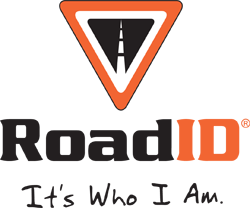|
"What was the secret, they wanted to know; in a thousand different ways they wanted to know The Secret. And not one of them was prepared, truly prepared to believe that it had not so much to do with chemicals and zippy mental tricks as with that most unprofound and sometimes heart-rending process of removing, molecule by molecule, the very tough rubber that comprised the bottoms of his training shoes. The Trial of Miles; Miles of Trials.”
― John L. Parker Jr., Once a Runner Elite runner's approach training in "phases", emphasizing different types of training at different times during the year. In the most simple format they break it down into five phases: off-season, preseason, in-season, peaking and post-season. Each phase emphasizes different types of training designed to produce slightly different results Their secret to success is to have a great off-season phase, this is where where you build your "base", also known as your aerobic system. This is critical for a distance runner. The aerobic system fuels your muscles with the oxygen needed to run fast for a long time. It includes your heart, lungs, blood vessels and at the cellular level the mitochondria that power your muscles. Your bones, joints and connective tissue gain strength to become resistant to injury. Base building is best accomplished by logging miles and miles, most at an very easy pace! Why? Scientific research shows us that lots of time spent running causes your muscles to develop more mitochondria and blood capillaries. It also conditions your heart and lungs to work efficiently with out tiring. So, how much running is needed? Here are a few stats for you:
Two other interesting developments come from logging lots of miles. One is mechanical, with miles comes increased efficiency. Your body finds the optimal stride length and foot placement that produces the most efficient stride for you. This is called "running economy" and is one of the greatest determinants of a runners performance! The better your running economy the less wasted energy and the easier running is. The other fascinating aspect of logging miles is increased resistance to fatigue! This means your body does not get as tired from running. Why? The more you run, the more routine the movements of running become. As this happens, your brain does not have to work as hard to make the body run, which reduces mental fatigue. The result is a lower level of perceived effort for whatever pace you are running. Off-season training generates the greatest gains in performance, so why don't we do this type training year round? Because this type training takes weeks to produce results, and during the process your body does not show the results! You will be tired, beat up and slow. You are more susceptible to injury during this phase, which is another reason to keep faster running to a lower intensity and to a minimum. Your results show up when you back off the training and allow the body to recover. One final comment on base training. you will reach a point where you feel "fried" from all the running. It is perfectly acceptable to take a few days or even a week of reduced mileage and intensity just to get your legs back underneath you! So, in summary, if you want to be a great runner, you have to log the miles, and you have to be patient enough to resist too much fast running during this phase! We will tackle the faster running when we get closer to the start of the XC season! In the immortal words of Quentin Cassidy “You don't become a runner by winning a morning workout. The only true way is to marshal the ferocity of your ambition over the course of many day, weeks, months, and (if you could finally come to accept it) years. The Trial of Miles; Miles of Trials.”
0 Comments
|
Archives
April 2023
Categories
All
|






 RSS Feed
RSS Feed

